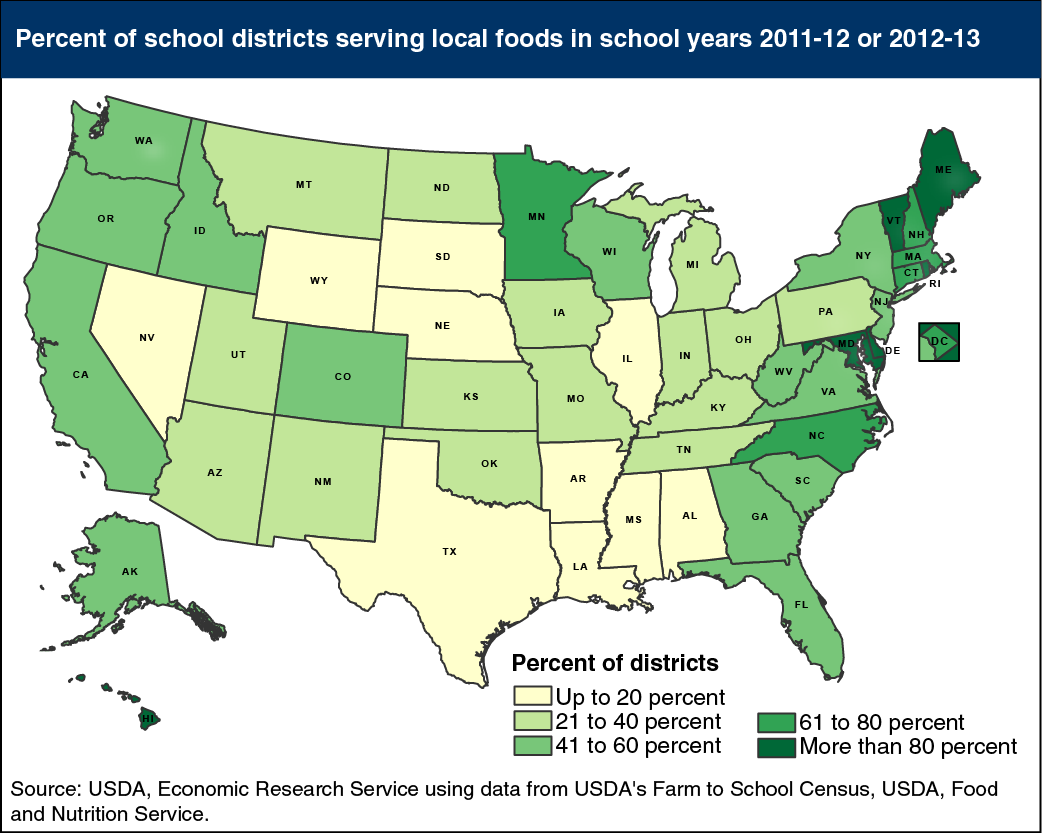Share of U.S. school districts serving locally produced foods varies by State
- by Katherine Ralston
- 4/7/2015

The Healthy Hunger-Free Kids Act of 2010 established the USDA Farm to School Program to encourage school districts to use locally produced food for school-provided breakfasts and lunches. USDA’s Farm to School Census, covering school years 2011-12 and 2012-13, found that 36 percent of the 9,887 public school districts that responded to the Census served locally produced food in their school meal programs, and an additional 9 percent planned to serve local foods in the future. Many States have legislation encouraging local sources of foods for school meals, and in a handful of States (Rhode Island, Maryland, Delaware, Vermont, Maine, and Hawaii) more than 80 percent of school districts that completed the questionnaire reported serving some local foods. In 10 other States, 20 percent or fewer districts reported serving local foods. Some of the hurdles to serving local foods cited by school districts included lack of year-round availability of key items, high prices for local foods, and lack of availability of local foods from primary vendors. This map appears in “Many U.S. School Districts Serve Local Foods” in the March 2015 issue of ERS’s Amber Waves magazine.


